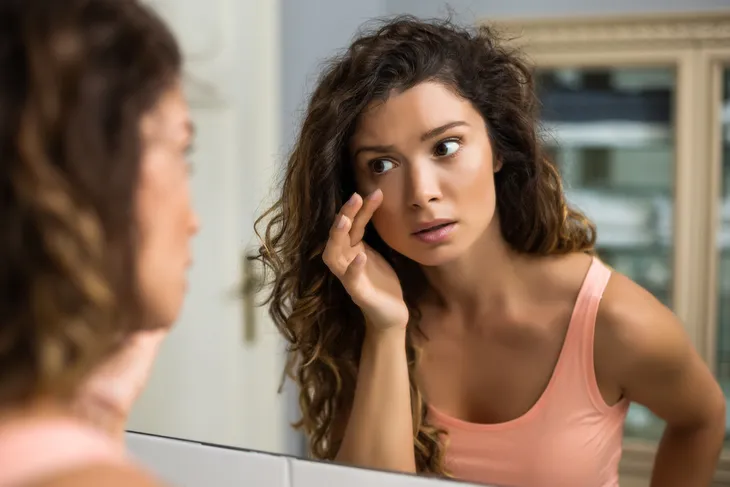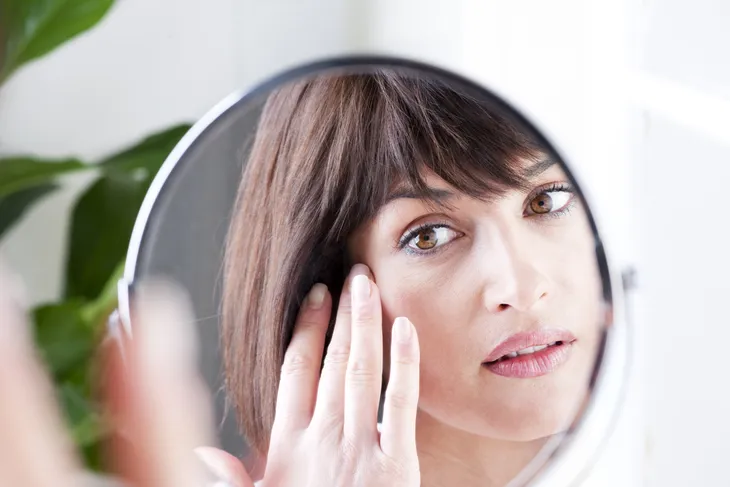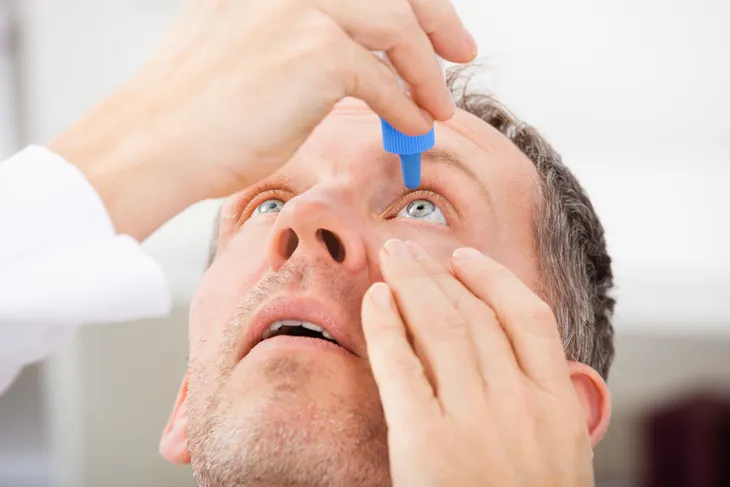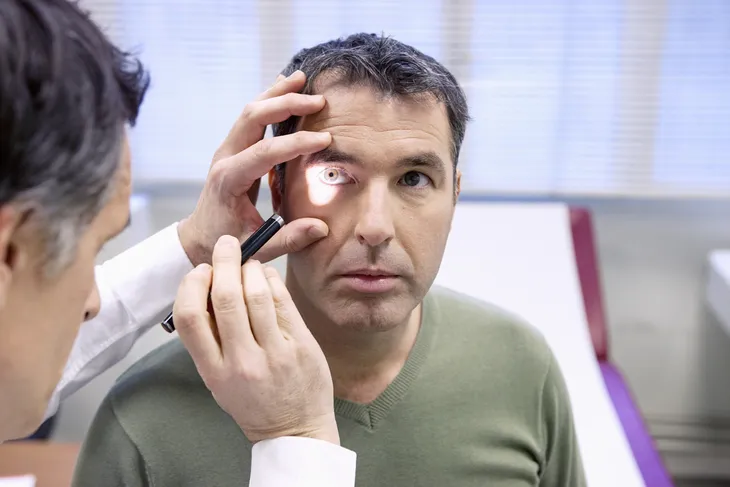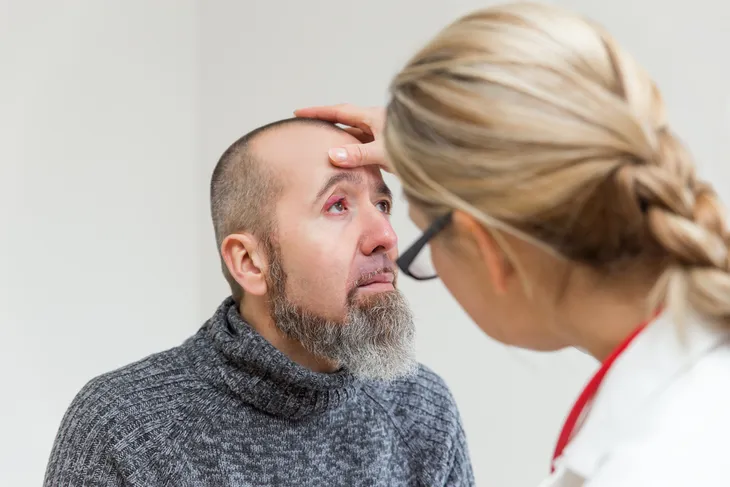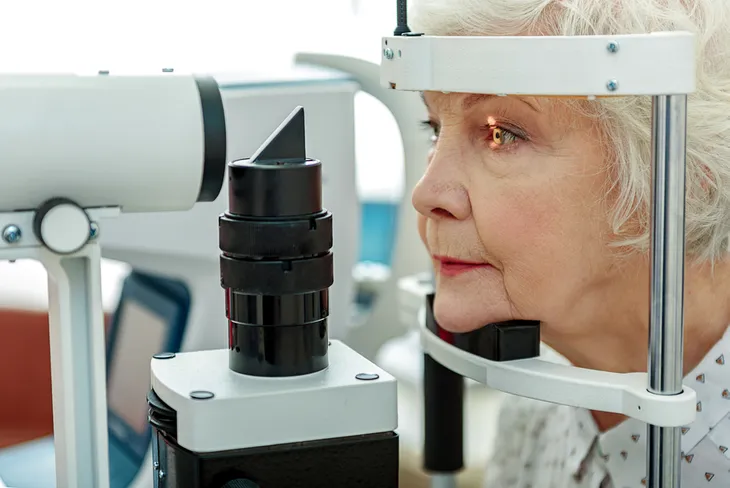They say our eyes are the windows to our soul, but they can also be the windows to more serious health problems, if you know how to look for them.
These aren’t just potential health conditions that a doctor or optometrist need to decode – sometimes the problems are obvious just by observing your eyes in a mirror. Let’s take a closer look at 13 things your eyes might be trying to tell you about your health…
Redness a Red Flag
Sure, your eyes may be red from rubbing or being very tired. It could also be a sign of an allergy. But it may also be a subconjunctival hemorrhage, which we admit, sounds very bad, but it actually refers to a bruise under the surface that usually clears up in a few weeks, says WebMD.
Redness might also be a sign of pink eye, medically known as conjunctivitis, which is caused by inflammation and is also highly contagious. There are over-the-counter and prescription treatments for this.
Bugging Out
CBS News notes that “bug eyes” – when your eyes are wide open and bulging – might point to Grave’s disease, which is an autoimmune condition affecting the thyroid gland.
This thyroid condition can lead to weight loss, anxiety, and a rapid pulse. Doctors don’t refer to the eye condition itself as bug eyes, however. If you have this problem, you’ll hear them refer to it as exophthalmos, which is the medical term.
Spot The White Dots
Woman’s Day warns that if you’re a wearer of contact lenses, white spots on your cornea (the clear, dome-shaped layer on the front of your eyeball) might indicate an infection.
There may be other causes of a corneal infection, but if you see white spots or have other symptoms including pain and swelling, or changes in your vision, seek some medical help.
Diabetes and Dots
If the dots you see in your eyes are red, you might be dealing with diabetes, which will affect about 40-percent of Americans during their lives, according to BusinessInsider.com.
“If blood sugar builds up too high, blood vessels begin to get blocked and to swell up. This can burst the tiny blood vessels in the retina, causing bleeding,” the source explains. If a doctor doesn’t treat it, this condition can lead to impaired vision or even blindness, it warns.
A Vision of High Cholesterol
YourSightMatters.com explains that if your cornea has a “yellowish appearance,” or if there’s a yellow ring around it, your eyes might be telling you to cut down your cholesterol.
“There also may be plaques in the blood vessels of the retina which could indicate elevated cholesterol,” it adds. The retina is a very important component located at the back of the eye, and can be viewed by specialized instruments.
Not So Cut and Dry
Dry eyes can be due to environmental factors, but it can also point to unpleasant things happening inside your body, notes the Review of Optometry.
The source indicates that inflammation “plays a key role” in severe dry eye, and this can be linked to 4-autoimmune conditions (when the body attacks its own healthy tissues). These conditions include rheumatoid arthritis, Sjögren’s Syndrome, rosacea, and Systemic Lupus Erythematosus, says the source.
Blurring the Lines
As CooperVision.com points out, a heavy night of drinking can cause your world to become blurry for a short time – but chronic eye problems can point to alcoholism. Both cataracts and age-related macular degeneration can distort your vision (and cause blindness), and alcohol consumption has been identified as a risk factor, it notes.
The source explains that heavy drinking can also strip your system from essential Vitamin B-1, causing a “weakness or paralysis of the eye muscles.” A Vitamin A deficiency from drinking too often can cause night blindness and thinning of the cornea, it adds.
Fading to Black
If you notice dark blotches on your eye creeping into places it shouldn’t be (namely the iris), then you should get yourself to a doctor or an eye specialist soon as it could be ocular melanoma.
This is a type of cancer that can “develop in the cells that make pigmentation in the eye,” according to YourSightMatters.com (your iris determines your eye color). Meanwhile, skin cancer can show up as basal cell carcinoma on the eyelid and “could even spread to the brain through the eye,” it adds.
Don’t Disregard a Droop
If you have eyelids that are drooping and it’s not a result of being half-asleep, then they might be telling you something more serious is happening.
CBS News explains that droopy eyelids on both sides (called ptosis) can mean you have myasthenia gravis, an autoimmune disease characterized by muscle weakness. Ptosis can also be a sign of a brain tumor – but don’t jump to the worst conclusions, let your doctor sort it out.
Beyond the Surface
While irregularities of the retina can point to high cholesterol as we’ve already mentioned, “cotton-wool spots and blood from broken blood vessels” on the retina can also point to HIV, according to the American Academy of Ophthalmology.
HIV can also cause a host of other eye problems including CMV retinitis (which can cause vision loss), detached retina (which can cause vision loss and blindness), as well as Kaposi sarcoma – a rare form of cancer exclusive to AIDS patients that shows up as purple/red lesions on the eyelids, says the source.
Measuring Up
Unequal pupil sizes (the middle black part of the eye) is a condition called anisocoria, which itself can be harmless or be the clue to a bigger health problem, explains MedicinePlus.gov.
About 1 in 5-healthy people has slightly different pupil sizes, and eye drops and other medicines can sometimes throw pupil size out of whack temporarily, it notes. But if one is more than 1-mm larger than the other, and doesn’t occur until later in life (and doesn’t resolve on its own), then you could be dealing with a condition of the eye, brain (including an aneurysm), or a nerve disease, it adds.
Unknown Pressures
High blood pressure is a major health problem, but often doesn’t present any symptoms until there’s a health episode. The same holds true for a condition called hypertensive retinopathy, which is caused by high blood pressure and can cause serious eye damage.
WebMD says this eye condition isn’t usually obvious until you go for a routine eye exam to detect retinopathy – although you may experience headaches and vision problems before that, it adds.
Losing Sight of Lenses
If a doctor notices the lenses in one of both of your eyes are slipping out of place due to weakened connective tissues, you may have Marfan Syndrome, according to The Marfan Foundation.
The syndrome is often characterized by extreme height and thinness in people, but there’s more to it than appearance – it can also cause weakness of the aorta carrying blood from the heart, which can rupture and lead to death.
Yellowing of the Eye
If you take a look in the mirror and notice the whites of your eyes are looking a bit yellow you may have a condition called jaundice. Jaundice is a condition where your body has too much bilirubin, a by-product of red blood cell breakdown.
For most people, their liver cleans out the bilirubin from their blood. But when you have too much bilirubin or your liver isn’t working quite right then the yellowish substance can be seen in the eyes. This can be caused by hepatitis, alcoholism, certain medications, liver failure, and sickle cell anemia. If you notice the whites of your eyes are turning yellow it’s best to put a call into your doctor to get things sorted out.


